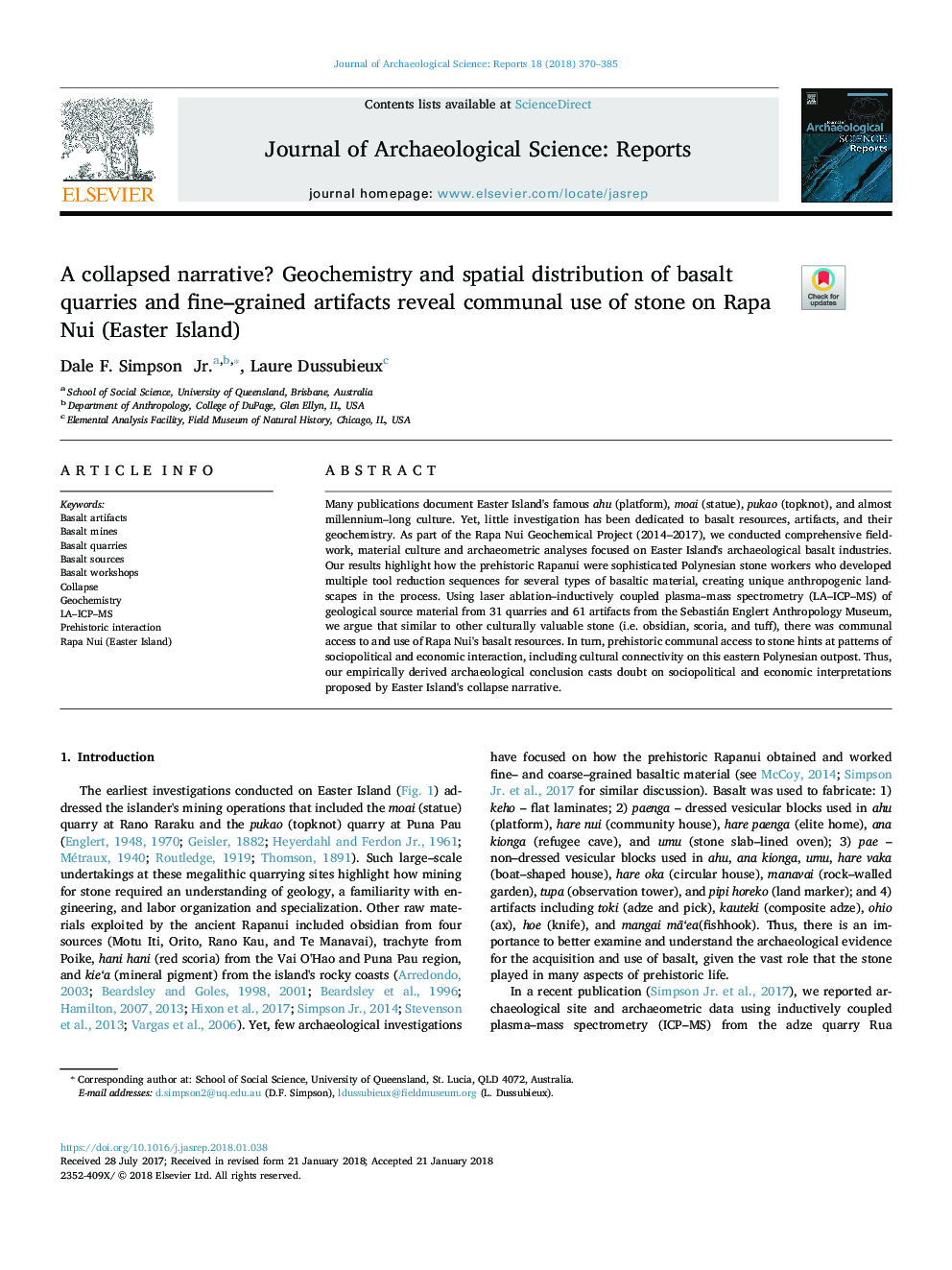| Article ID | Journal | Published Year | Pages | File Type |
|---|---|---|---|---|
| 7444969 | Journal of Archaeological Science: Reports | 2018 | 16 Pages |
Abstract
Many publications document Easter Island's famous ahu (platform), moai (statue), pukao (topknot), and almost millennium-long culture. Yet, little investigation has been dedicated to basalt resources, artifacts, and their geochemistry. As part of the Rapa Nui Geochemical Project (2014-2017), we conducted comprehensive fieldwork, material culture and archaeometric analyses focused on Easter Island's archaeological basalt industries. Our results highlight how the prehistoric Rapanui were sophisticated Polynesian stone workers who developed multiple tool reduction sequences for several types of basaltic material, creating unique anthropogenic landscapes in the process. Using laser ablation-inductively coupled plasma-mass spectrometry (LA-ICP-MS) of geological source material from 31 quarries and 61 artifacts from the Sebastián Englert Anthropology Museum, we argue that similar to other culturally valuable stone (i.e. obsidian, scoria, and tuff), there was communal access to and use of Rapa Nui's basalt resources. In turn, prehistoric communal access to stone hints at patterns of sociopolitical and economic interaction, including cultural connectivity on this eastern Polynesian outpost. Thus, our empirically derived archaeological conclusion casts doubt on sociopolitical and economic interpretations proposed by Easter Island's collapse narrative.
Keywords
Related Topics
Social Sciences and Humanities
Arts and Humanities
History
Authors
Dale F. Jr., Laure Dussubieux,
